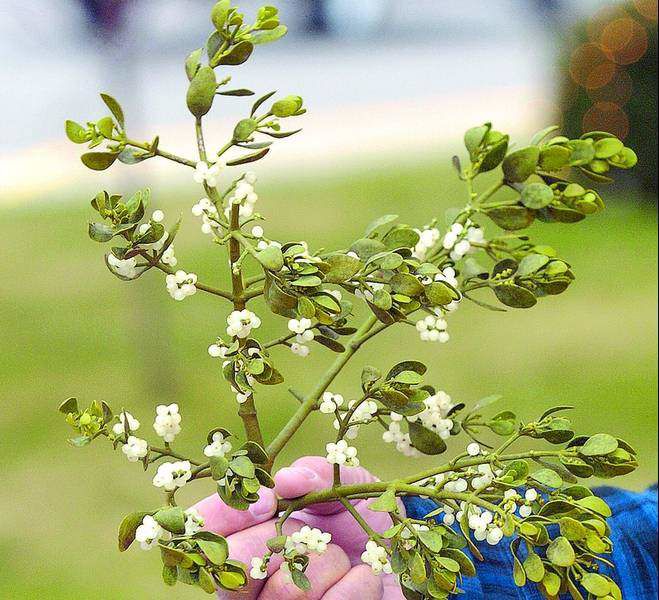Patients pin hopes on dangerous mistletoe
Published 4:00 am Thursday, December 28, 2006

- Mistletoe is poisonous to people.
It sounds like a bad, made-for-TV, Christmas miracle movie: The Mistletoe That Cured Cancer. But according to the British Medical Journal, many cancer patients in Europe routinely inject themselves with mistletoe extract in hopes of improving their conditions.
Mistletoe, best known as a Christmas tradition, is a semi-parasitic plant that grows on several types of trees, including apple, oak, maple, elm, pine and birch. It has been used for centuries to treat medical conditions such as epilepsy, hypertension, headaches, menopausal symptoms, infertility, arthritis and rheumatism.
Mistletoe is used mainly in Europe and Asia, where products are made and sold under brand names including Iscador, Eurixor, Helixor, Isorel, and Vysorel. The products have different compositions depending on what tree the mistletoe grew on, when it was harvested and how it was prepared.
Mistletoe is used mainly in Europe and Asia, where products are made and sold under brand names including Iscador, Eurixor, Helixor, Isorel and Vysorel. The products have different compositions depending on what tree the mistletoe grew on, when it was harvested and how it was prepared.
Europeans spend about $59 million a year on mistletoe extracts and some studies have found that up to two-thirds of oncology patients in some European countries may be using it as a complementary therapy to their standard cancer treatments. In Germany, the insurance system pays for mistletoe treatments. Yet many doctors are concerned that mistletoe may not be effective or even safe.
Dr. Edzard Ernst, a professor of complimentary medicine at the University of Exeter and Plymouth, says that many studies have shown the mistletoe can kill cancer cells in the test tube. Many plants have some sort of anticancer activity, he says.
But in most cases, those plants are either toxic to humans or the compound isn’t readily available to fight cancer when injected or ingested into the body.
Still, some experts believe from animal studies that mistletoe may be useful in decreasing the side effects of standard anti-cancer therapy, such as chemotherapy and radiation therapy, and that it may protect the immune system from certain drugs.
But Ernst says the studies that have tested the effects of mistletoe in cancer patients have been poorly designed and the results have been inconclusive. Meanwhile, there have been numerous reports of adverse effects, including anaphylaxis, breathing difficulties, joint pain and kidney failure. Mistletoe plants and berries are toxic to humans and can cause seizures, slowing of the heart rate, abnormal blood pressure, vomiting and death.
”(The claim) that mistletoe injections have no serious risks is therefore misleading,” Ernst wrote in the British Medical Journal this month. ”The most reliable randomized controlled trials fail to show benefit and some reports show considerable potential for harm.”
This month doctors from the University Hospital of Wales in the U.K. reported in the same journal the case study of a 61-year-old woman who complained of a tumor-like growth under the skin of her abdomen two months after a cancerous lump was removed from her breast. Her doctors excised the mass but found it was not related to her cancer. After further discussion, the woman admitted she had been injecting herself with mistletoe extract for the past 12 months, which doctors believe caused the growth. The National Center for Complementary and Alternative Medicine is now conducting a clinical trial in the U.S. to see whether mistletoe may be a safe and effective adjunct to chemo-therapy. But in the meantime doctors say there’s no evidence to back its use.
”I therefore recommend mistletoe as a Christmas decoration and for kissing under,” Ernst says, ”But not as an anti-cancer drug.”






